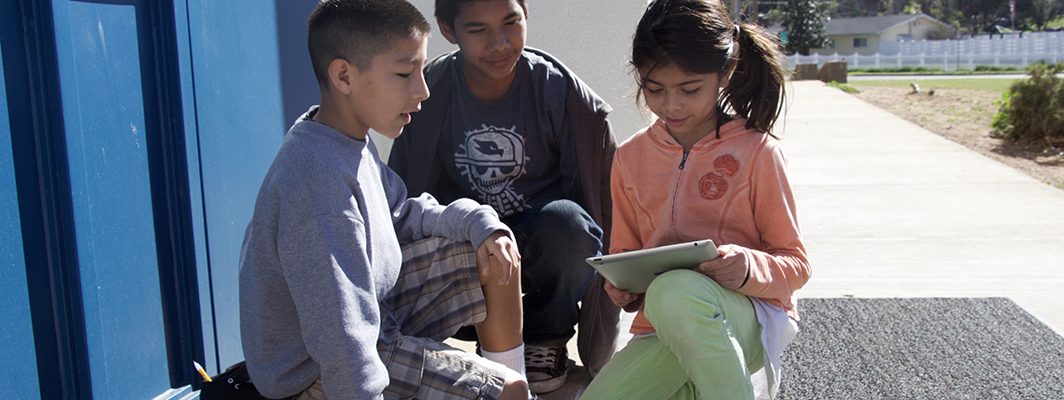
January 11, 2017 | By Christina Luke Luna
To learn more about the use of ed-tech in summer learning, Digital Promise worked with three League of Innovative Schools districts in summer 2016 to pilot four ed-tech products: Mathspace, TenMarks, eSpark, and Amplify Games. In our new report, Rapid Cycle Pilots: Summer Ed-Tech Programs, we share key findings on how the summer programs were structured, and offer tips for implementing ed-tech over the summer.
While each district structured its program differently, educators and district leaders in all three districts agreed that two factors were paramount to summer program success: early student and parent recruitment, and ongoing incentives to promote student engagement.
Recruit Parents and Students Early
Districts that recruited and engaged parents in advance of the program were ultimately more successful in engaging students throughout the summer. An educator from Elizabeth Forward School District said, “To make a summer program a success, you have to start early and change the mindset of the community. People here feel like summertime is off-time from learning.”
In the future, districts plan to talk with parents about the need for summer enrichment in the spring, and orient them to the ed-tech tools so they can track their students’ progress. As parents become committed to the programs and comfortable with the tools, they may be more likely to help motivate students to participate.
Provide Ongoing Incentives
Since the summer programs were all entirely virtual, educators struggled to motivate learners from afar. To address this issue, some districts have committed to offering ongoing incentives to keep students motivated. For instance, Elizabeth Forward hosted a well-attended culminating celebration for students that included pizza and prizes. In the future, the district plans to offer more of these live events to encourage ongoing participation throughout the summer. Additionally, educators recommended selecting ed-tech tools that are highly interactive and fun as a way to keep students motivated. According to a teacher from Vista, the best choices are “ed-tech tools that are more collaborative and gamified, and provide constant reinforcement and feedback.”
Further, the opportunity to meet with teachers for in-person check-ins could help motivate some students and troubleshoot problems before students become disengaged. Optional meetings hosted by Kettle Moraine teachers were not well-attended, but students who took advantage of those opportunities used the ed-tech tool more than those who did not.
The Value of Ed-Tech for Summer Learning
While the results for learning outcomes in this study were mixed, educators across the participating districts still agreed there was value to exposing students to ed-tech throughout the summer. Students were more excited about learning and felt they were better problem solvers at the end of the summer program than the beginning. And, according to Elizabeth Forward educators, the summer program was especially valuable for students who would be using the tool during the school year. A middle school teacher said, “Students were excited to start a new grade after experimenting with a tool they’ll be using next year.”
District leaders in this study plan to offer summer ed-tech program again next year, and encourage other districts to experiment with ways they too can harness the power of technology to combat summer learning loss.
For study briefs on each ed-tech product piloted in this study, and more information about the changes in student attitudes and knowledge, download the report.
Also, check out our Ed-Tech Pilot Framework, which offers a step-by-step approach to piloting ed-tech products.
By Sierra Noakes and AJ Foster
By Dr. Kyle Dunbar and Dr. Brian Troop